Bathroom mirrors aren’t just about checking if your hair’s behaving. They set the tone for your whole space. A mirror that’s too small feels awkward. Too big? It swallows the room. And when you throw lightning into the mix, the size choice gets even trickier.
If you’ve been eyeing a sleek wall mirror with lights, you’re already halfway to a stylish, functional bathroom. The right size can make your morning routine feel less like a scramble and more like a mini spa session. Let’s break down how to nail the perfect fit.
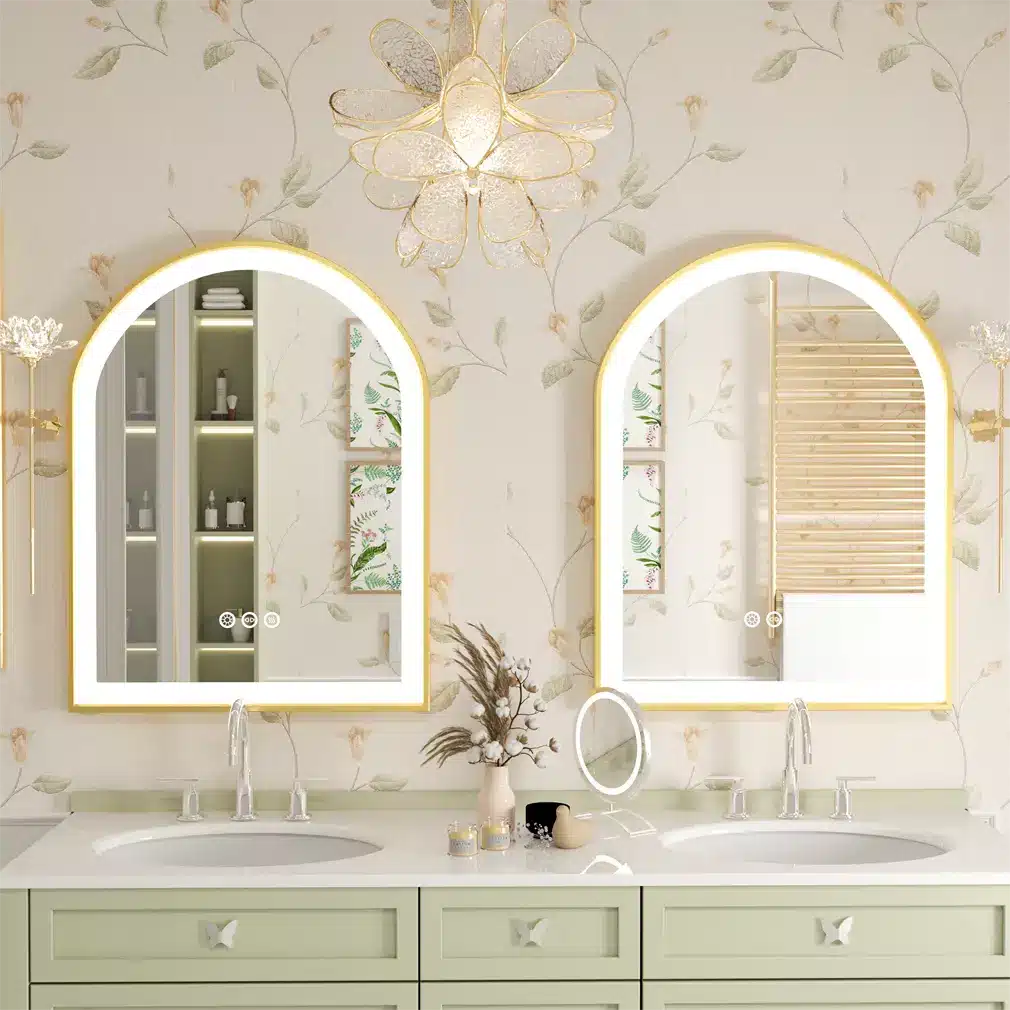
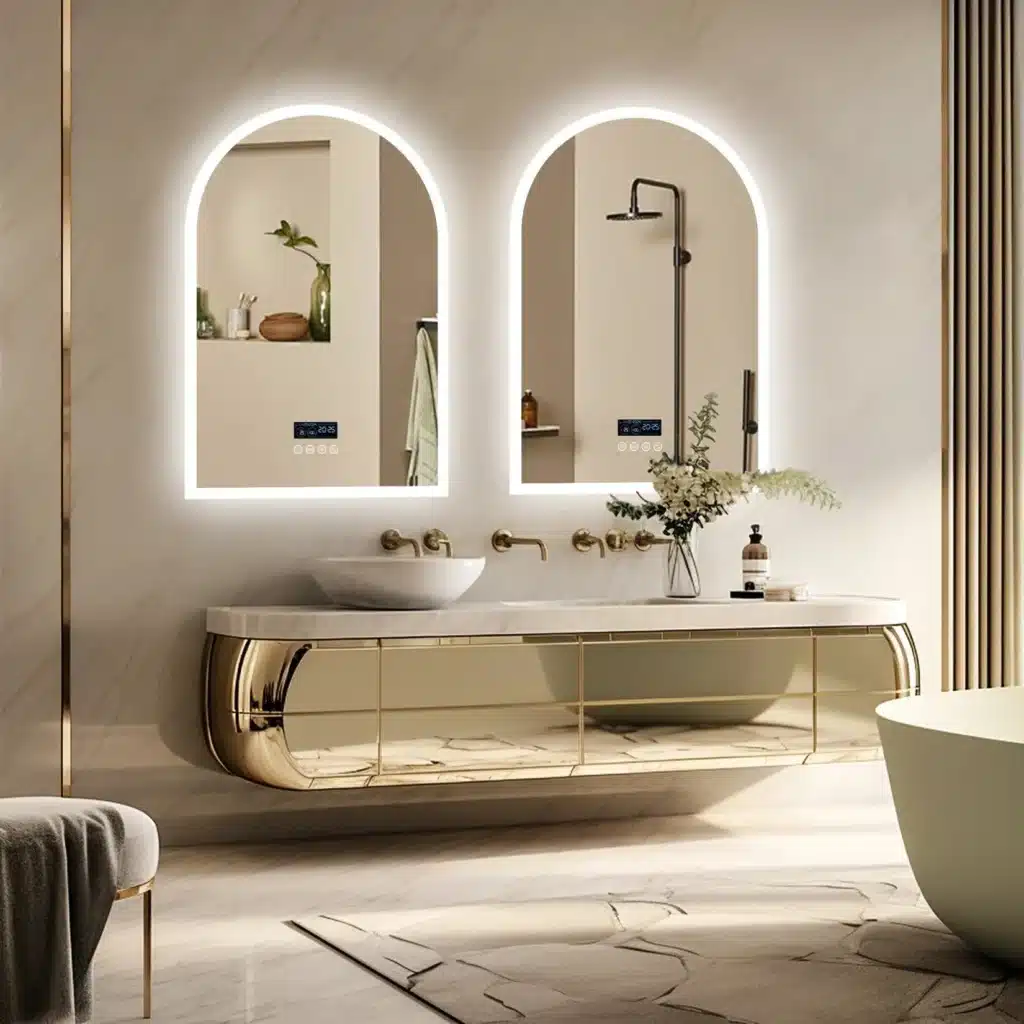
Why Size Matters More Than You Think
A mirror isn’t just a reflection—it’s a design statement. Too small and it looks like an afterthought. Oversized, and it dominates the wall in a way that throws the balance off. The goal is proportion. You want the mirror to complement your vanity, walls, and lighting without stealing the entire show.
Lighting changes the game. Built-in LEDs don’t just brighten your face—they affect how big the mirror feels. A well-lit edge can make a mirror seem larger without taking up extra inches.
Start With Vanity Width
Rule one: your mirror shouldn’t be wider than your vanity. The sweet spot is usually the same width or a couple of inches smaller. If you’ve got a 36-inch vanity, aim for a mirror between 34–36 inches wide. That keeps the visual flow tight and intentional.
For double vanities, you’ve got options. Two separate mirrors work for a symmetrical look, while one long mirror stretches the space. In both cases, lighting strips or backlit edges keep things crisp.

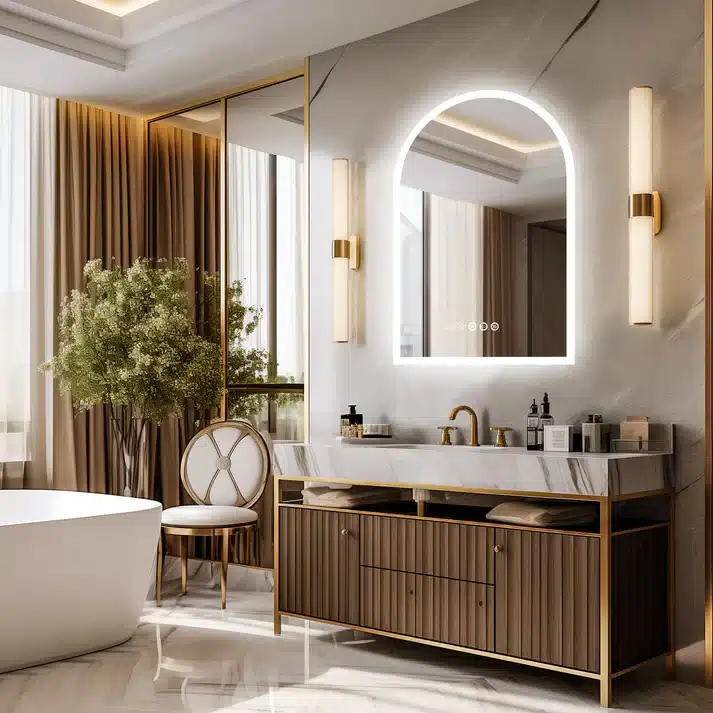
Height: Don’t Ignore the Vertical Space
Width gets all the attention, but height is just as important. Your mirror should sit a few inches above the faucet and end a few inches below the ceiling or light fixture. This keeps the sight lines clean and ensures you’re not craning your neck.
If you’ve got high ceilings, consider a taller mirror to fill that blank space. Lighting along the sides can elongate the feel even more.
Small Bathrooms: Keep It Smart, Not Tiny
In a compact bathroom, your instinct might be to shrink everything. Don’t. A larger mirror can actually make the room feel bigger by bouncing more light around. For a powder room with a 24-inch vanity, a 22–24 inch mirror works beautifully—especially if it’s got built-in LED lighting.
Go for slim frames or frameless designs so you’re not cutting into valuable reflection space.
Large Bathrooms: Balance the Scale
Bigger bathrooms give you more freedom, but scale still matters. For wide vanities—say, 60 inches or more—a big statement mirror can anchor the space. If you’re using a wall mirror with lights, consider edge lighting or halo effects that give it presence without overwhelming the room.
In some cases, two tall mirrors with lights flanking each sink can look more refined than one massive piece.
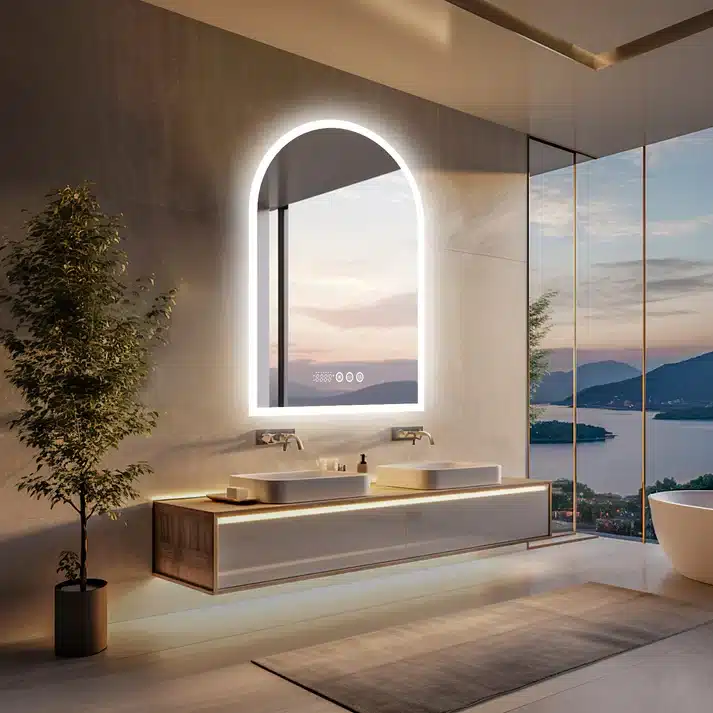
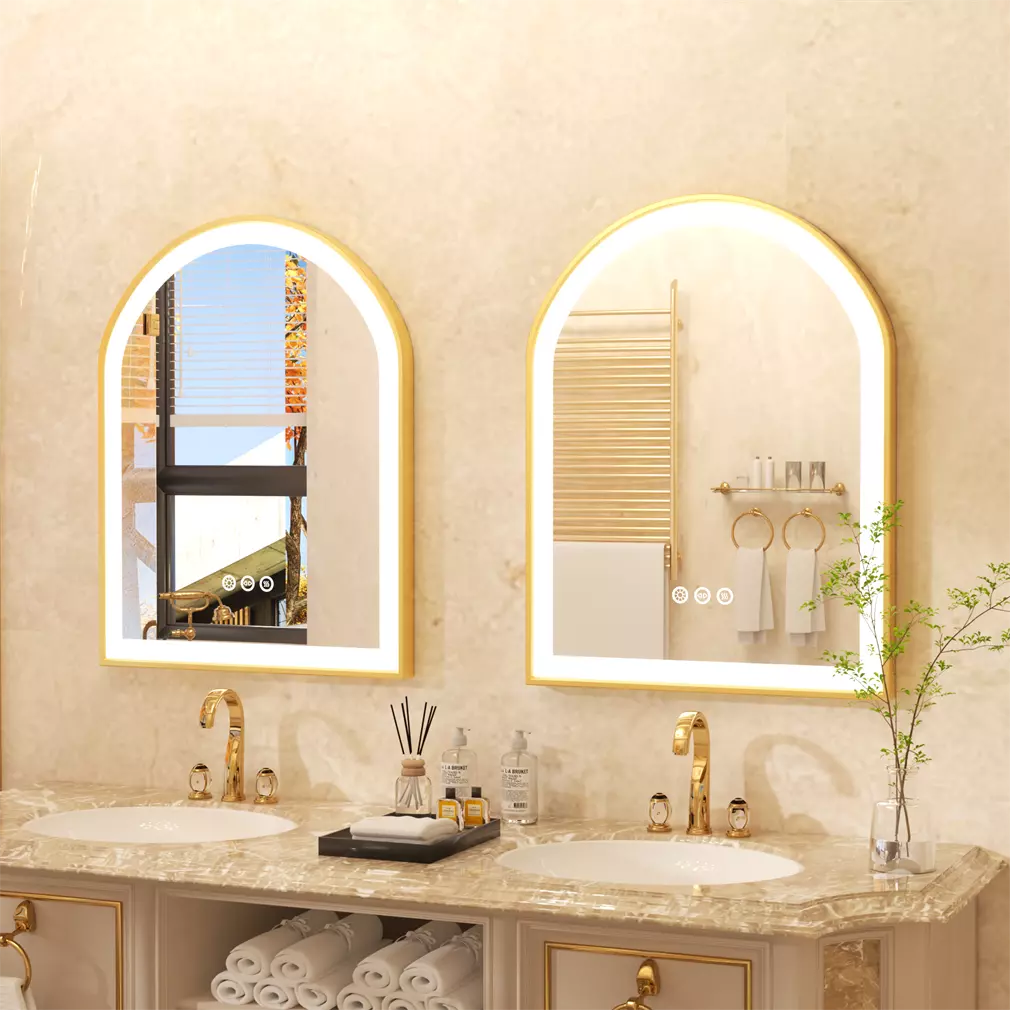
Shape Can Change Perception
Rectangular mirrors are the go-to, but round and oval shapes can soften a space. They work especially well in smaller bathrooms or when you want to break up a lot of straight lines from tiles and cabinetry.
Lighting around a curved mirror adds a subtle glow that feels luxe without being flashy.
The Lighting Factor
An unlit mirror is simple. A mirror with built-in lighting is a whole different vibe. The size and placement of that lighting affect how the mirror works in your space.
For small mirrors, backlighting can make them feel larger. For big mirrors, integrated front lights give you even face illumination—ideal for makeup, shaving, or skincare.
Wall-to-Wall Mirrors: When to Go All In
If you’ve got a long vanity or want to create a dramatic effect, a wall-to-wall mirror can be the move. In this case, lighting becomes even more important. Instead of edge lighting, consider adding vertical light bars on either side to keep the whole reflection evenly lit.
This approach works best in modern, minimalist bathrooms where clean lines are key.
The Illusion of Space
A mirror’s job isn’t just to reflect—it’s to trick the eye. Larger mirrors in lighter frames or frameless designs bounce more light, making the bathroom feel bigger. Combine that with soft LED lighting, and you’ve got a space that feels brighter and more open.
Even a modest bathroom can look like it got an upgrade just by getting the size right.

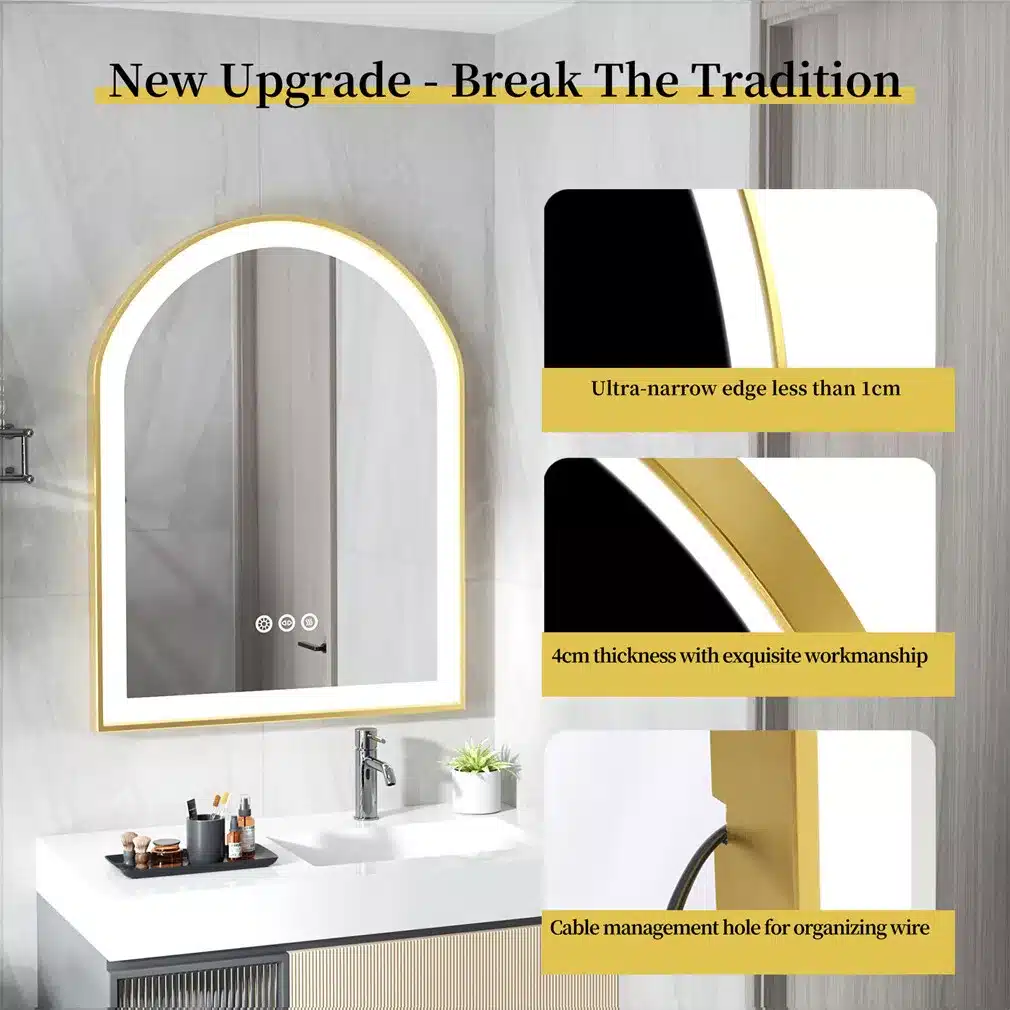
Common Mistakes to Avoid
- Going too small: It makes the vanity look oversized and the space awkward.
- Ignoring lighting needs: A beautiful mirror is useless if the lighting is uneven.
- Placing it too high or low: Aim for eye level for the average user.
- Clashing styles: Match the mirror’s design with your bathroom’s overall aesthetic.
Measuring Tips That Actually Work
Grab a tape measure and mark the width of your vanity on the wall. Then, subtract 1–2 inches from each side to find your ideal mirror width. For height, measure from a few inches above your faucet to just below any overhead lighting.
If you’re ordering a wall mirror with lights, check the total dimensions including the frame and lighting strip—not just the reflective surface.
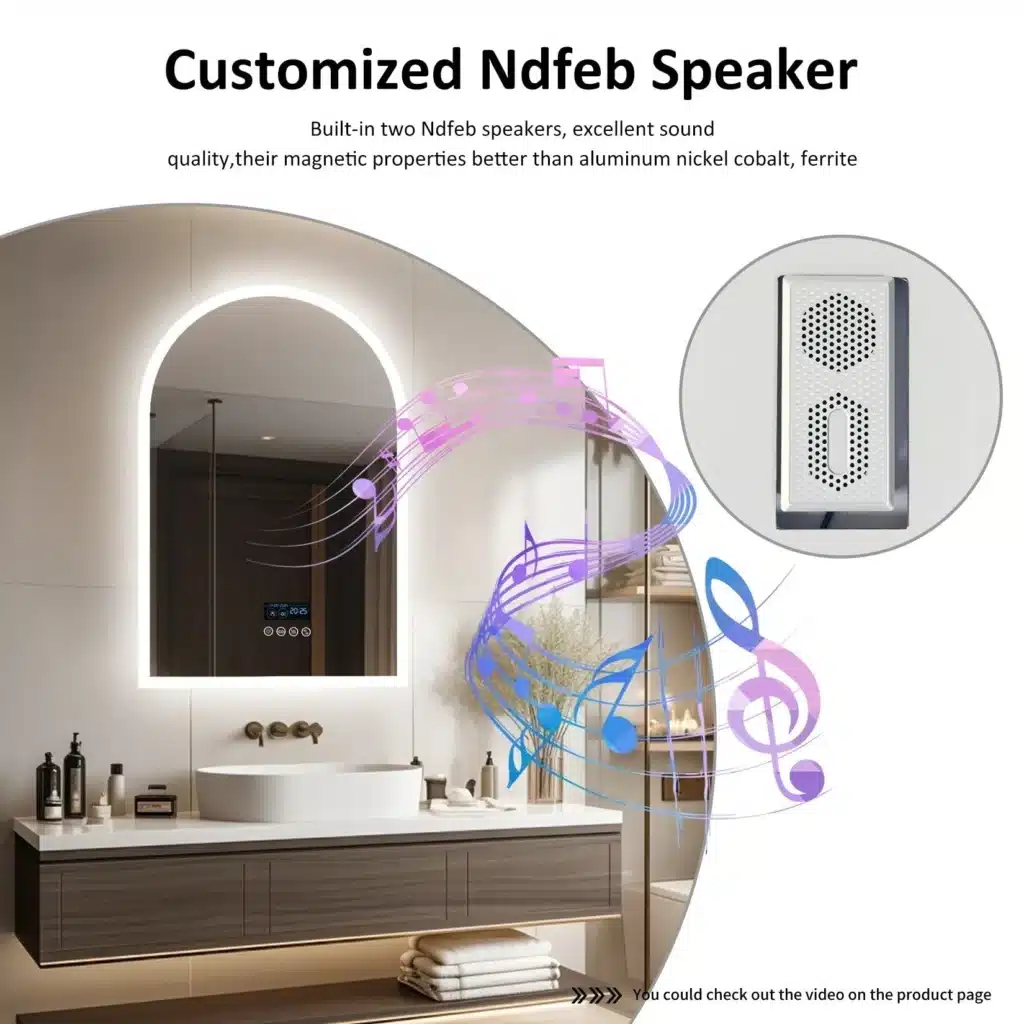

Framed vs. Frameless: Does It Affect Size?
Framed mirrors can eat into the reflective space, so you might need to size up slightly. Frameless mirrors keep the focus on the reflection and can work in tighter spots.
With lighting, frameless designs often look sleeker, especially in modern bathrooms. But a thin metal frame can add just enough definition without feeling bulky.
How to Match Size to Style
A traditional bathroom with ornate fixtures might call for a framed mirror that’s slightly smaller than the vanity. A modern, minimalist space looks best with a frameless, full-width option.
Lighting style matters too. Soft, diffused LEDs suit a spa-like vibe, while bright, clear lights lean more functional.
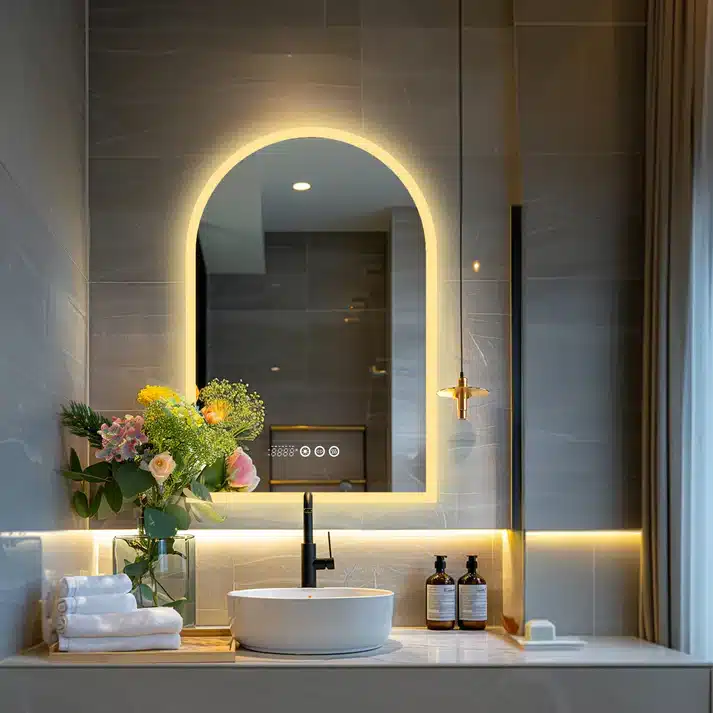
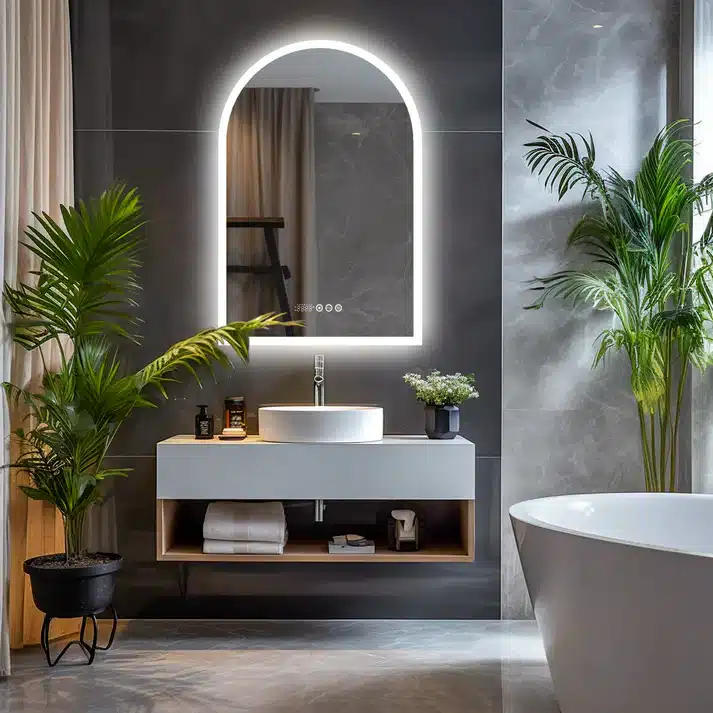
Final Thoughts on Size and Lighting
The “right” size is less about a single measurement and more about proportion, function, and style. Keep the mirror in harmony with the vanity, leave breathing room for wall space, and use lighting to enhance rather than overpower.
When you get it right, the mirror becomes more than a tool—it’s part of the room’s personality.
- 0shares
- Facebook0
- Pinterest0
- Twitter0


